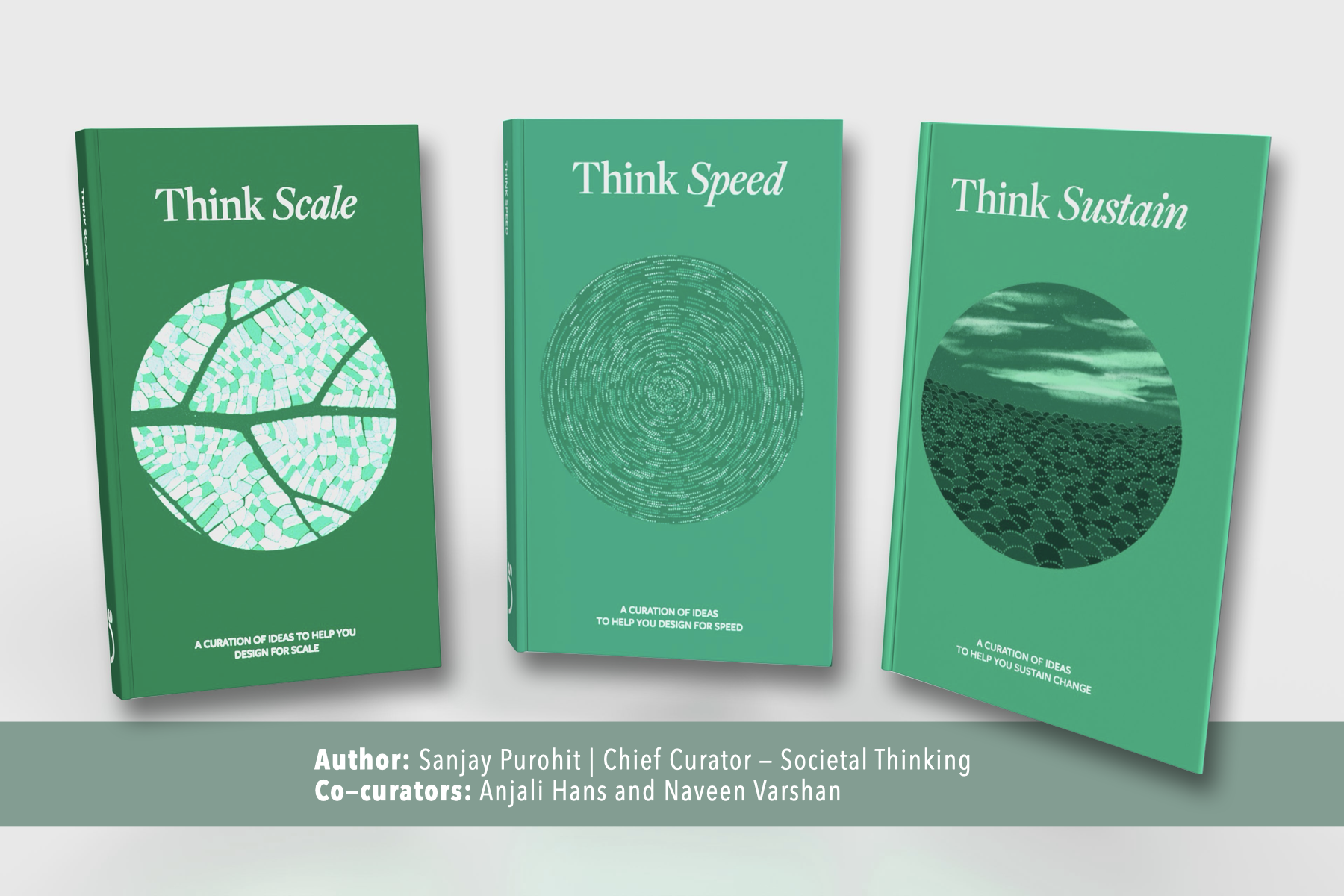In the last two decades, our world has rapidly changed. In response to how these changes have seeped into our lives – in ways good as well as challenging – new models of leadership have emerged. While unique, all these leadership models recognise the need for collaborative solving. One such model is Societal Leadership, an emergent approach to fostering leadership towards impact@scale. As Khushboo Awasthi, COO of ShikshaLokam puts it, “Societal Leadership as an idea is just emerging. It’s still taking shape – like an amoeba in its primitive form.” And, to figure out what Societal Leadership looks like in action, we nurtured the Leader’s Lab – the first cohort of which met in November 2023 in Bangalore.
During the first cohort, leaders reflected on their journey towards impact@scale – what got them started on this path and what kind of support they need to become better leaders, as well as enable other leaders like them. As we wrapped up the first gathering, we realised the importance of creating more such spaces for leaders to come together.
Fueled by curiosity about how these spaces can be formed, Aruna and I were eager to experiment. We knew that it was only through collaboration that we would be able to reach out to more (and diverse) leaders and explore other forms of leadership working towards solving at a societal scale.
This led us to partner with AVPN for their second pilot of the Global Leadership Academy (GLA) in Lucknow. The GLA aims to create a space which amplifies unheard voices from the Global South. The GLA believes in the power of facilitating impact leaders in the Global South, who work deeply with communities to engage in peer-to-peer learning, knowledge sharing, and collaboration. It included individuals from diverse backgrounds and ecosystems from India, Japan, and Kenya.
“Aruna, Chief Leader’s Lab at Societal Thinking, says: “Through our initial conversations with AVPN, we realised, we shared a mutual belief in experimental thinking. We both care about reimagining leadership to drive impact@scale. Our collaborative effort was rooted in cultivating safe spaces for personal connection and open exchange. Weekly calls and co-creating the agenda together helped understand each other’s roles and build trust with one another, which proved to be a critical factor for a successful collaboration”.
Our collaboration in action
Our collaboration came alive in a gathering that convened at Novotel in Lucknow, India. It included individuals from varied backgrounds and ecosystems – from emerging leaders to the funding ecosystem. This diversity was not accidental – we thought deeply about making room for leaders across many kinds and layers of impact work to come together, hear and learn from one another. As Kurt Peleman, Director of Special Projects at AVPN puts it, “We were clear that we wanted participants to have the autonomy to determine their learning objectives, fostering an open agenda while ensuring us as hosts had sufficient time for preparation without undue complexity. For this to work, we invested a lot in bringing together a qualitative and complementary group of leaders. The open and inclusive format across the gathering allowed all individuals to interact and hear each other by dropping their professional guards.”
My takeaways
Post the gathering, I have been thinking about what it takes for effective collaboration, for creating open spaces that hold space for diversity, and for building a sense of belongingness between leaders who, though are working towards a common vision, have unique needs and experiences.
Here are my 5 takeaways.
- Value match: Decisions (especially if we are at a crossroads) become simple when values align. They always put the greater good over that of an individual or an organisation.
- Co-Creation: Involving all stakeholders in the design process from the outset fosters a sense of collective decision-making, contributing to the space’s authenticity and inclusivity.
- Co-ownership: Making sure that everyone is an active participant instead of a recipient of one’s design (of space, agenda and more) allows everyone to bring up what is most pressing to them, forge connections and find like-minded people.
- Representation: Voices from the Global South have recently begun being heard – and it will take a sustained effort to make them mainstream. Even within these voices, some go unheard because of the binds of class, gender, disability status and more. So, designing for equal and active representation becomes paramount.
- Cultural immersion: Exploring ways to engage with the local community and understand their unique lived experiences with site visits, conversations and more allows for blended learning
More so, as I was reflecting I thought back to the Tree of Life exercise we all did. The Tree of Life is an exercise based on the idea of using the tree as a metaphor to tell stories about one’s life, for example, the roots represent Origins, Ancestry, Family, Influences and fruit Achievements, Creations, Contributions, Legacy. During the session, a common thread emerged. Despite their distinct places of origin and domains/geographies of work, a shared essence connected these leaders – a profound influence of their past experiences and upbringing on their current missions. For example, we visited a cafe run by acid attack survivors to speak to them and understand their journey. Witnessing the cohort’s interactions with the local community unveiled the transformative power of creating spaces for participants to connect and share the way they navigate their past experiences to think about the future they are working towards.
At this gathering, we also explored our 9 dimensions of Societal Leadership and surfaced it with a group of grassroots leaders because we wanted to explore how these leaders will receive it. This was a deliberate effort to invite feedback and perspectives from a broader spectrum of leaders whom we may not regularly encounter. This allows us to gain more insights and work on different ways to showcase the dimensions. The learnings from that experience are shaping our next collaborations. If you are curious about the 9 dimensions or would like to take this to your ecosystem, we would love to chat.
 Back
Back



